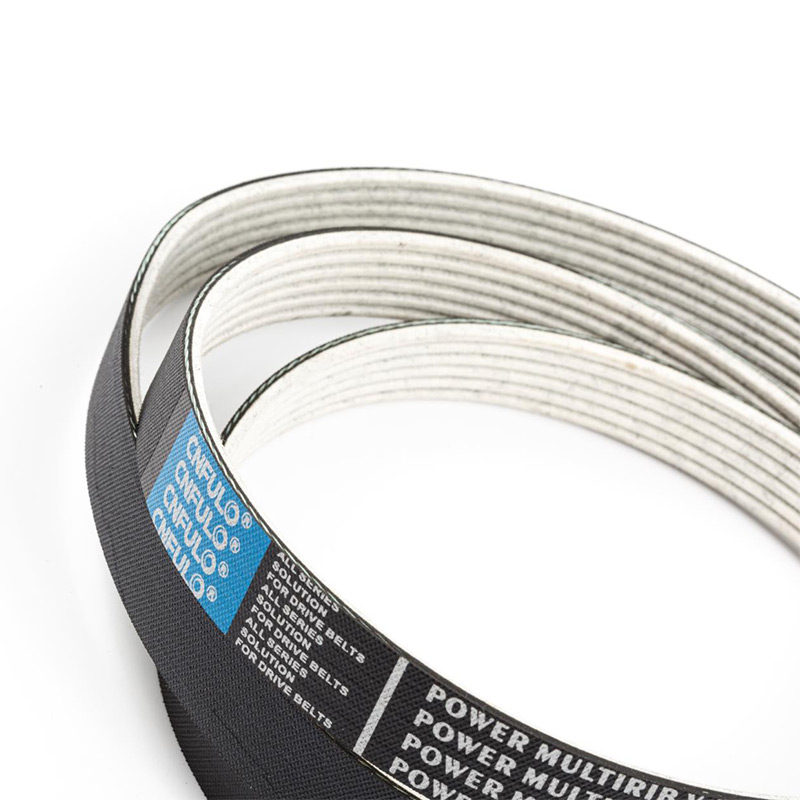When using industrial transmission belts in high-speed or high-torque applications, several special considerations should be taken into account to ensure positive performance, safety, and longevity:
Belt Width and Thickness: Increasing belt width and thickness is a fundamental strategy for enhancing load-bearing capacity and mitigating the risk of premature failure in high-speed or high-torque applications. Wide belts distribute tension more evenly across the pulley surface, reducing stress concentrations and minimizing the likelihood of belt slippage or fatigue failure. Similarly, thicker belts exhibit greater resistance to deformation and are better equipped to handle elevated torque loads without compromising performance. The selection of appropriate belt dimensions is informed by thorough analysis of the application's power transmission requirements, operating conditions, and safety factors to ensure positive belt performance and longevity.
Pulley Design and Size: The design and sizing of pulleys play a pivotal role in the efficient operation of belt drive systems under high-speed or high-torque conditions. Pulleys are meticulously engineered to withstand the increased forces and dynamic stresses associated with elevated rotational speeds and torque levels. Larger diameter pulleys are favored for their ability to reduce belt bending stresses and minimize flexural fatigue, thereby extending belt life and reducing maintenance requirements. Wider pulleys provide greater contact area with the belt, enhancing power transmission efficiency and minimizing wear.
Tensioning and Tracking: Effective tensioning and tracking mechanisms are essential for maintaining positive belt performance and alignment in high-speed or high-torque applications. Tensioning devices, such as spring-loaded tensioners or automatic tensioning systems, exert precise force on the belt to counteract stretching and ensure consistent belt tension throughout the operating cycle. Proper belt tracking is facilitated by precision-engineered pulleys and idlers, which are designed to maintain accurate belt alignment and minimize lateral movement. Advanced technologies, such as laser alignment systems and computerized tension monitoring devices, enable real-time adjustment of belt tension and tracking parameters, enhancing system reliability and efficiency.
Cooling and Ventilation: Effective cooling and ventilation strategies are essential for dissipating heat generated during high-speed or high-torque operation, thereby preventing thermal degradation and prolonging component lifespan. Industrial belt drive systems may incorporate passive cooling features, such as finned pulleys or heat sinks, to increase surface area and facilitate heat dissipation through convection. Active cooling methods, including forced-air circulation or liquid cooling systems, are employed in applications where elevated temperatures pose a significant risk to system integrity.
Dynamic Balancing: Dynamic balancing is a critical process for minimizing vibrations and ensuring smooth operation of rotating components in high-speed or high-torque belt drive systems. Rotating machinery, including pulleys, shafts, and couplings, undergoes precision balancing procedures to minimize static and dynamic imbalance and reduce the risk of resonance-induced vibration. Advanced balancing equipment, such as dynamic balancing machines and vibration analyzers, are utilized to detect and correct imbalance issues with utmost accuracy. Modal analysis and frequency response testing are employed to identify critical vibration modes and design countermeasures to mitigate their effects, ensuring positive system performance and reliability.

Grinding production, PH PJ PK model can be molded production
Synchronous tooth and multi-wedge double-sided combination is available